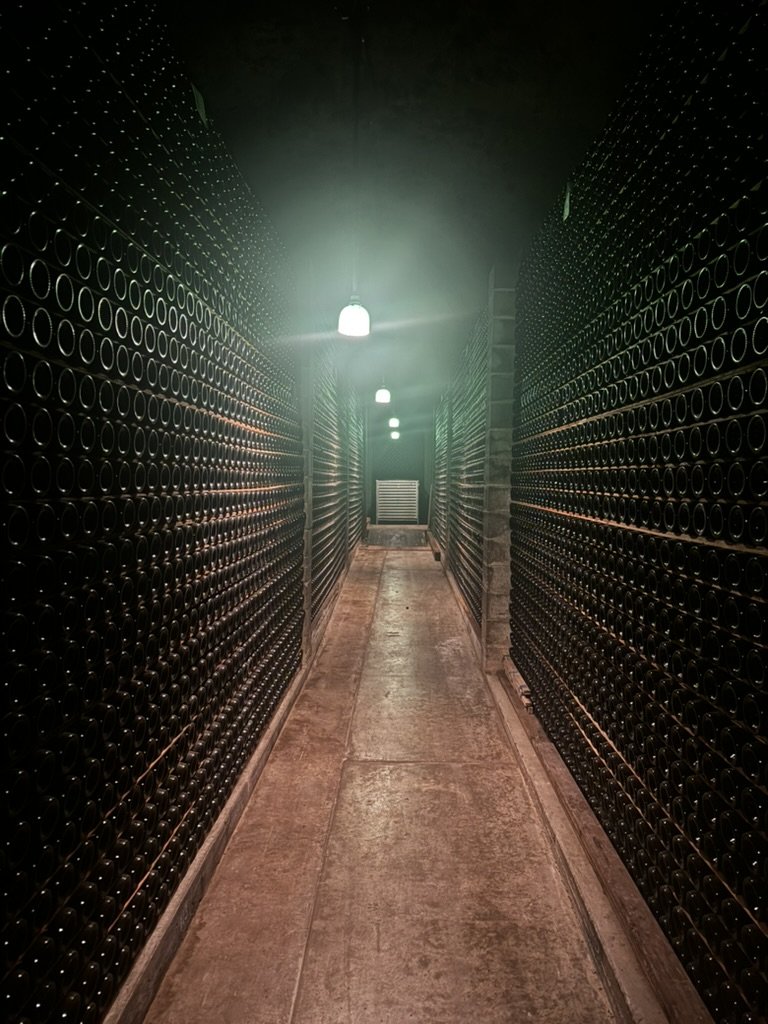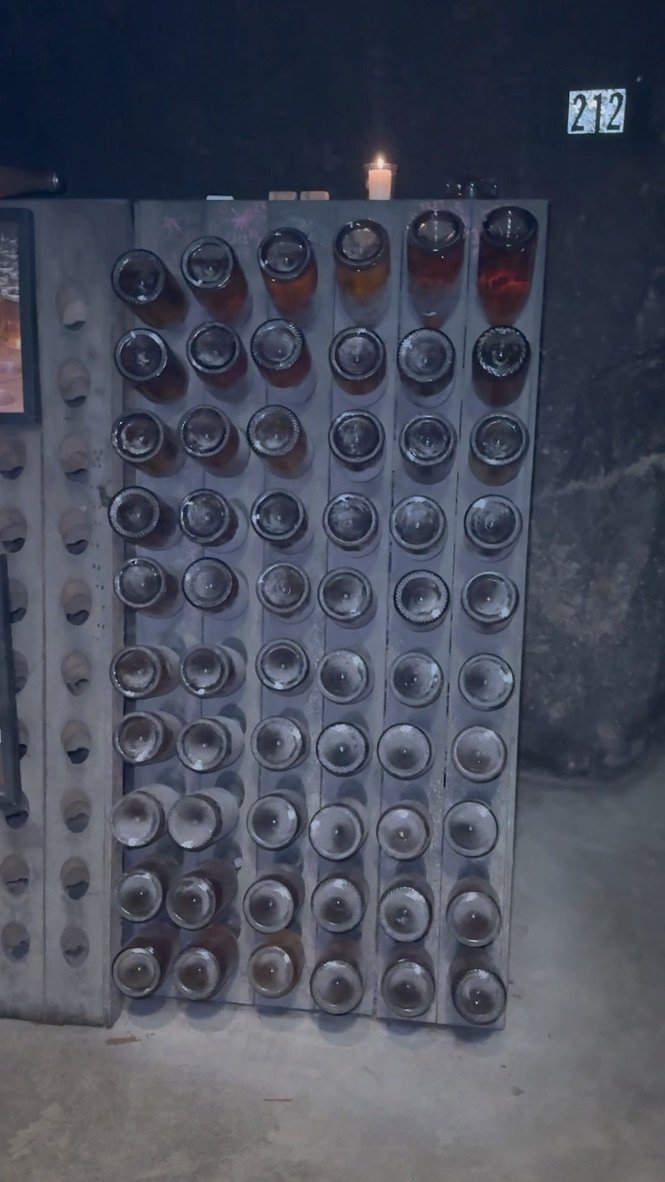The Champagne Method
The world of sparkling wine is vast and varied, but none are more celebrated than those crafted using the traditional Champagne method, also known as "Méthode Champenoise" or "Méthode Traditionnelle." This meticulous process, originating from the Champagne region of France, is revered for producing the most exquisite bubbles. Champagne is made from 7 steps and is required to take no less than 15 months for the process.
Step 1: Harvesting, Pressing, and Initial Fermentation
The champagne journey begins in the vineyard, where grapes are hand-picked to specifically pick out the best quality grapes. There are three primary grape varieties used in Champagne: Chardonnay, Pinot Noir, and Pinot Meunier. Each varietal contributes unique characteristics to the final blend. After harvesting, the grapes are gently pressed to extract the juice, minimizing skin contact to prevent unwanted tannins and colors from leaching into the wine.
The extracted juice then undergoes primary fermentation where the yeast converts the natural sugars in the grape juice into alcohol and carbon dioxide. The result is a still wine, known as the "base wine," which is dry and has a high acidity—essential for producing balanced sparkling wine.
Step 2: Assembling the Cuvée (Blend)
Blending is a critical step in the traditional Champagne method. Winemakers create a "cuvée" by combining base wines from different grape varieties, vineyards, and sometimes vintages (year). This blending process allows them to maintain a consistent house style and achieve the desired flavor profile. Non-vintage Champagnes are the result of blending wines from multiple years, while vintage Champagnes are made from grapes harvested in a single exceptional year.
Step 3: Secondary Fermentation
The blended wine is bottled with a mixture of sugar and yeast, known as the "liqueur de tirage." The bottles are then sealed with a crown cap (like a glass beer bottle) and placed in a cool cellar for another fermentation cycle. This fermentation occurs inside the bottle, creating carbon dioxide that dissolves into the wine, forming the bubbles that Champagne is famous for.
Step 4: Aging on the Lees
Once secondary fermentation is complete, the wine undergoes an aging period, often lasting several years. During this time, the wine remains in contact with the lees (dead yeast cells) imparting complex flavors and a creamy texture (this is where the “bread” and “doughy” notes come from). The longer the aging, the more pronounced these characteristics become, with some premium Champagnes aging for over a decade.
Step 5: Riddling (“Remuage” - Turning the bottles)
After aging, the bottles undergo a process called riddling, or "remuage," to consolidate the yeast particles into the neck of the bottle. Traditionally, this is done by hand, with a skilled riddler gently rotating and tilting the bottles over several weeks.
Step 6: Disgorging (Dégorgement)
Once the yeast particles are collected in the neck of the bottle, the necks are frozen. Because of the fermentation inside the bottle, the pressure will be about 70 - 90 PSI. Once the crown cap is removed, this pressure shoots out the frozen yeast like a bullet.
Step 7: Dosage
Before sealing the bottles with a cork, a small amount of wine and sugar ("liqueur d'expédition") is added. This adjusts the sweetness level, resulting in styles ranging from "Brut Nature" (no added sugar) to "Doux" (sweet). The bottles are then corked and fitted with a wire cage to secure the cork.
Bonus step:
After dosage, the Champagne is allowed to rest for a few months to harmonize the flavors before it is ready for release. This final aging period ensures the wine is perfectly balanced and ready to delight.
The traditional Champagne method is a testament to the art of winemaking, requiring patience, precision, and a deep understanding of the craft. Each bottle is a labor of love, reflecting the dedication and expertise of the winemakers (often reflected in the price as well…). The result is a sparkling wine to rule them all!




![Blood Donation
*
[Insert joke about wine donation😅🍷]
*
I used to absolutely hate needles, I was the biggest baby and never wanted them near me.
I have since put my big boy pants on and now three times a year I make a habit to donate blood.
*
Can](https://images.squarespace-cdn.com/content/v1/64d95c834b3d7257d38ab99f/1732503078639-D52SGTCKRHGDH8NYELQP/image-asset.jpeg)



